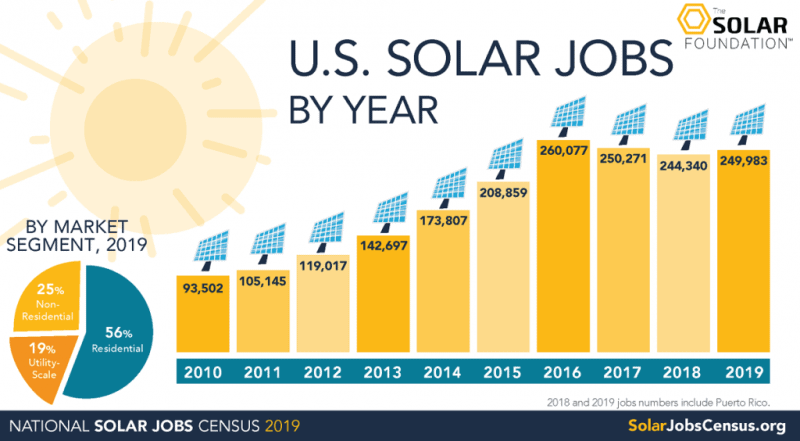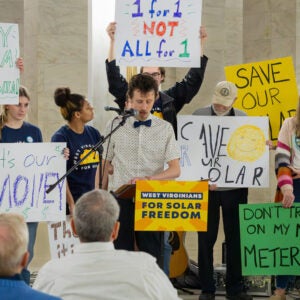Solar tax benefit will drop $1500 for the average homeowner in 2023
The federal tax credit for homeowners and businesses covers 26% of the cost of your solar project. Going solar can reduce your 2022 tax bill by thousands!
What is the solar tax credit?
The solar tax credit was originally established in 2005 to support and expand access to solar energy for homeowners and businesses. Since then, it has spurred investment and research in renewable energy and as technology has continued to improve, the cost of going solar has continued to decline.
The tax benefit has also helped to stimulate job growth in the clean energy sector. In the past decade alone, American solar jobs have seen an increase of 167%, and we’re proud to be a part of why that number is growing in Appalachia. We were recently honored to be recognized by Marshall University when we were given the 2021 Power of Performance Award for “Putting People to Work.” We built this company in West Virginia because we believe in the promise of our workforce and the economic potential of our state.
“Employment of solar photovoltaic (PV) installers is projected to grow 51 percent from 2019 to 2029, much faster than the average for all occupations.” – US Bureau of Labor and Statistics
While the tax credit has been an excellent incentive to help more folks go solar and grow the industry, it was not intended to be permanent, and we’ve been preparing for it to step down in 2021 and then fade out entirely in 2022. This extension is fantastic news for the thousands of Appalachians yet to experience the benefits of generating their very own electricity — and it means you still have a chance to take advantage of bigger savings.
Who qualifies for the tax credit?
- Your system will need to be installed by December 31, 2022 in order to qualify for the 26% credit.
- To be eligible, you must be currently paying federal income taxes.
- The solar tax credit is tied to your federal income tax burden — if you usually owe income taxes, it will reduce the amount you pay. If you usually receive a refund, it will increase the amount of your refund. The tax credit can zero out what you pay for a year, but it is not refundable.
- If you’re on a fixed income (i.e. veteran pension, social security), be sure to review your tax returns from last year to see how much tax you paid overall.
- If you do not have enough tax liability to claim the full credit in one year, you can roll over the remaining credits into the next year.
- Projects can take 2-3 months from contract to completion including all the engineering and permitting, so it’s best not to wait until December to make the call.
How do I take the tax credit?
You will claim the tax credit when you file your yearly federal tax return. When it’s time to file your taxes, you will need to complete IRS Form 5695 “Residential Energy Credit” to validate your eligibility for the tax credit and include this information when you file your regular income tax return (IRS Form 1040).
Please note: Since we’re solar folks and not tax preparers, we always suggest consulting with your tax advisor for guidance about your specific tax obligations.
Curious about your tax credit eligibility? We’d be happy to put you in touch with a tax professional that’s familiar with this section of tax law to help you determine your eligibility.
Tax Filing Resources:
- Instructions for Form 5695
- Homeowner’s Guide for residential solar projects
- Business owner’s guide for commercial solar projects
References:
Bureau of Labor and Statistics: https://www.bls.gov/ooh/construction-and-extraction/solar-photovoltaic-installers.htm#tab-6
Our World in Data: https://ourworldindata.org/cheap-renewables-growth
The Solar Foundation: https://www.thesolarfoundation.org/national/








